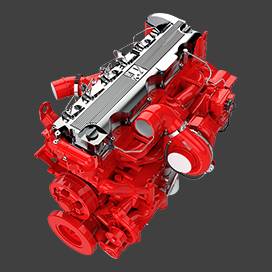Sep . 18, 2024 20:59 Back to list
lightweight brake drums
The Innovation of Lightweight Brake Drums Enhancing Performance and Efficiency
In the ever-evolving world of automotive engineering, the pursuit of efficiency, performance, and safety is relentless. One area that has recently seen significant innovation is brake technology, particularly in the development of lightweight brake drums. These components play a critical role in the braking system of vehicles, ensuring safety while contributing to overall vehicle performance.
Traditionally, brake drums have been constructed from heavy materials such as cast iron. While these materials have provided durability and strength, they also add considerable weight to vehicles. The increased weight can adversely affect fuel efficiency and overall handling. In contrast, lightweight brake drums are designed to minimize this weight without compromising safety or performance.
The primary benefit of lightweight brake drums lies in their ability to enhance vehicle efficiency. By reducing the unsprung weight of a vehicle, lightweight brake drums allow for improved handling and acceleration. This reduction in weight can lead to better fuel economy, which is a crucial consideration for consumers and manufacturers alike as they strive to meet environmental standards and reduce emissions.
lightweight brake drums

Manufacturers are turning to innovative materials such as aluminum alloys and composite materials to achieve this reduction in weight. These materials not only provide the strength required for effective braking but also possess excellent heat dissipation properties. Heat management is vital for brake performance, as excessive heat can lead to brake fade, significantly impairing a vehicle's ability to stop effectively. Lightweight brake drums enhance heat dissipation, ensuring consistent performance even during rigorous driving conditions.
Moreover, the production of lightweight brake drums can lead to manufacturing efficiencies. The use of advanced materials and technologies, such as 3D printing, allows for more precise designs and potentially lower costs in the long run. As automotive manufacturers continue to innovate and explore sustainable production practices, lightweight components like these become essential in the design of next-generation vehicles.
In addition to performance and efficiency, the shift towards lightweight brake drums also has implications for safety. A lighter braking system can contribute to shorter stopping distances and improved overall vehicle dynamics, making vehicles safer for drivers and passengers alike. As safety regulations become more stringent, the demand for innovative braking solutions will only increase.
In conclusion, lightweight brake drums represent a significant advancement in automotive technology. By reducing weight without sacrificing performance, they contribute to enhanced vehicle efficiency, better handling, and improved safety. As manufacturers continue to explore new materials and production methods, the evolution of brake technology will play an essential role in shaping the future of the automotive industry, paving the way for greener and more efficient vehicles.
-
HINO Industrial Efficiency-Jiangsu Hino Industrial|Productivity Optimization&Cost Reduction
NewsJul.12,2025
-
HINO-¡Ң���ຽ��е��������˾|Advanced Industrial Solutions&Energy Efficiency
NewsJul.12,2025
-
Premium Brake Drum Iveco – Durable Drum Brake Drum & Brake Shoe Solutions
NewsJul.08,2025
-
High-Performance Brake Drum Liza for Enhanced Safety Reliable Drum Brake Drum & Brake Shoe Solutions
NewsJul.08,2025
-
High-Quality Brake Drum MAZ – Durable Drum Brake Drum & Brake Drum and Brake Shoe for Optimal Performance
NewsJul.07,2025
-
High-Quality Brake Drum Kamaz for Reliable Performance Durable Drum Brake Drum & Brake Shoes
NewsJul.07,2025
